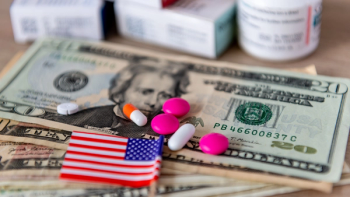
- Pharmaceutical Executive: September 2023
- Volume 43
- Issue 9
No Rate Relief in Sight for Biotech
Strong economic data in other sectors mean rising ‘real’ rates.
Retail sales, industrial production, and housing starts all came in above consensus expectations for the month of July. According to Michael Darda, chief economist and market strategist at Roth Capital Markets, “[S]trong data is at variance with the FOMC’s intention to impose a restrictive monetary stance and ‘hold there,’ such that growth moves below trend and inflation moves back to target. Any signs that growth is at, or above, trend will be met with tighter monetary policy than would otherwise prevail. We can see this most clearly in the 36-month Fed fund future, where the implied policy rate has risen more than 100 bps since the spring of this year. Market rates have risen in sympathy.”
This is important because, as Darda states: “[A] rise in discount rates, ceteris paribus, will lower the valuations at which future earnings are discounted.” To put this into context, Darda adds, “The last time real rates were near 200 bps (using the 10-year TIPS yield) was between 2003 and 2009, a period during which the S&P 500 forward P/E ratio was nearly 20% lower than what prevails today. Even if we take out the 2008-2009 period, equity multiples were materially lower (just above 15x on a forward basis) than the nearly 19x that currently prevails.”
The Fed’s release last week of the minutes from its July FOMC meeting clearly states that we are headed for more rate hikes and any future declines are further out in the distance. Thirty-year mortgage rates are the highest they have been since 2002 at about 7%.
As we have stated countless times in the past, rising rates are toxic to valuations of long-dated assets, and biotechs are the longest dated of all asset classes. So, the carnage in the sector continues.
All major indexes fell in mid-August on this news of “higher for longer,” which took the XBI down another 3%, and it is now down 6.6% for the year. In fact, the XBI has fallen 10% over the past month versus a far more modest decline of 4% for the S&P 500.
Tim Opler, managing director at Stifel Investment Banking, shares some disheartening statistics and facts in his biopharma market update:
- The Ark Genomic Revolution ETF, which holds many gene-editing stocks, is down 19.6% for the last month.
- The total value of the global biotech sector dropped 5.4% (or $10 billion in mid-August) and is down 14% in the last month. Over three-quarters of biotechs saw their value drop in the last month.
- At this point in the cycle, the population of biotechs worth less than $100 million is growing ever larger as there are fewer and fewer companies able to sustain a market cap more than $500 million.
- Sixty-five percent of all public biotech companies around the world now have an enterprise value under $100 million.
There will likely be no turn in biotech until investors gain a line of sight on the peak and then a decline in interest rates; but, again, there has been nothing but more bad news on this front recently.
It is not surprising that activity in the IPO market remains negligible and follow-ons have slowed, owing to the interest rate environment as well as summer doldrums.
Meanwhile, the more limited access to new capital and rapidly shrinking cash runways for many biotech means the number of companies announcing that they are exploring strategic options, including layoffs, restructurings, asset reallocations, shutdowns, and reverse mergers, continues to climb. According to Opler, “The number of companies making these types of announcements this quarter is very likely high and to set an all-time record.” We think he will be right about this.
Finally, to end with a bit of hope. Darda sees the following: “[S]till high year-ahead recession probabilities, once the multiple temporary forces holding up the economy fade, including a huge swing in the fiscal deficit and a rundown of excess savings. As this happens, Fed policy will automatically become tighter, and future nominal growth will head lower.”
In other words, what’s gone up (rates) will eventually go down and biotech valuations (which have been down) could head up.
Articles in this issue
over 2 years ago
Pharmaceutical Executive, September 2023 Issue (PDF)over 2 years ago
A New Era of Ethical Leadershipover 2 years ago
Survival Story: Enhertuover 2 years ago
Gut Instinct: Rebyotaover 2 years ago
Delaying Disease Onset: Tzieldover 2 years ago
New Beginnings: Sunlencaover 2 years ago
A Heartfelt Solution: Camzyosover 2 years ago
Fortifying Defenses Pre-Patent Cliffover 2 years ago
New Product Planning: The Function's Evolution in PharmaNewsletter
Lead with insight with the Pharmaceutical Executive newsletter, featuring strategic analysis, leadership trends, and market intelligence for biopharma decision-makers.





